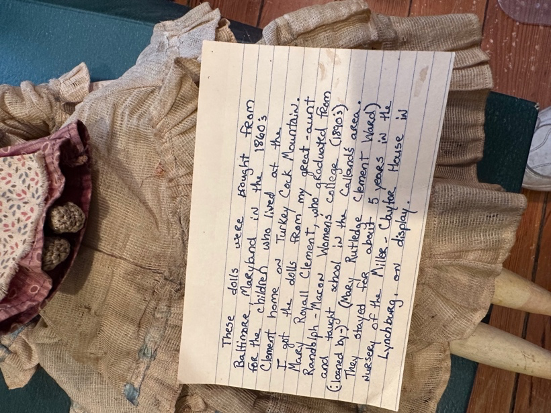Avoca's Antique Dolls
For this week’s post, we have decided to focus on another artifact from Avoca’s collections. Pictured below are three (slightly creepy) antique dolls. These dolls date from around the 1860s, but children have been playing with dolls for much longer than that. Some of the earliest dolls date from around 2000BC, found in ancient Egyptian tombs. Dolls are a children’s toy that has consistently changed with the times, from the simple dolls of antiquity to the modern Barbie doll. The dolls pictured below are appropriately dressed in mid 19th century attire with layered skirts. Their bodies are fashioned from a mix of wood and fabric, and the heads are most likely made of painted porcelain. Perhaps what makes these dolls most interesting, however, is their involvement to local history. As the second picture states, these dolls originated from Baltimore, Maryland before becoming playthings of children who lived in the Turkeycock mountain area of Franklin County. From there the dolls spent time in the Miller-Claytor home, which is located today in Riverside Park. The Miller-Claytor home is Lynchburg’s only remaining 18th century townhouse, and is reportedly believed to be the home where Thomas Jefferson proved tomatoes were not actually poisonous. These dolls are an excellent example of how even the simplest of historical artifacts often have a very storied past worth remembering.


